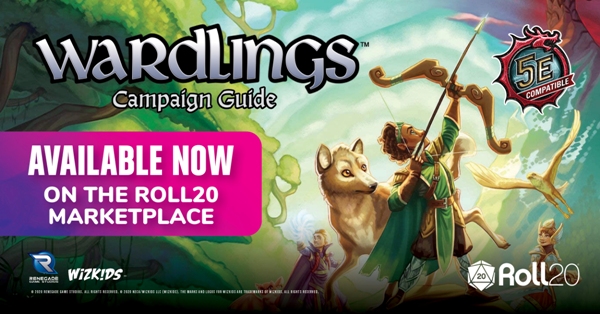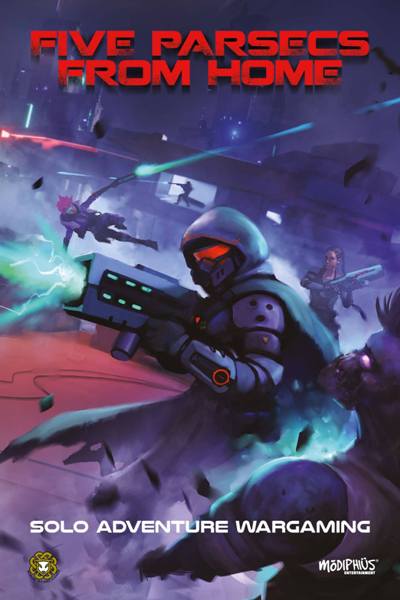NaGaDeMon: The Challenge with the Evil Name
By The Warden
 There are two demanding challenges going on this month in Fantasy Land (AKA the Internet), each more daunting than the last: NaNoWriMo (National Novel Writing Month) and NaGaDeMon (National Game Design Month). The first taunts each willing participant to write a 50,000 word story within the 30 days of November, while the second is an effort to design a new RPG from start to finish during the same time frame. I’d heard about these events last year and wanted to start making an effort, this year starting with NaNoWriMo. My original thought assumed since I was already working on designing games and supplements, why not take a break from that and try something different? Reading through some of the #NaGaDeMon tweets, another angle dawned on me: it’s not just the challenge of designing a game for the first time, but to do so within an insane deadline.
There are two demanding challenges going on this month in Fantasy Land (AKA the Internet), each more daunting than the last: NaNoWriMo (National Novel Writing Month) and NaGaDeMon (National Game Design Month). The first taunts each willing participant to write a 50,000 word story within the 30 days of November, while the second is an effort to design a new RPG from start to finish during the same time frame. I’d heard about these events last year and wanted to start making an effort, this year starting with NaNoWriMo. My original thought assumed since I was already working on designing games and supplements, why not take a break from that and try something different? Reading through some of the #NaGaDeMon tweets, another angle dawned on me: it’s not just the challenge of designing a game for the first time, but to do so within an insane deadline.
There are no rules in this challenge, no guidelines, no limitations, or specifications (though their FAQ does suggest something if you’re the type who needs one for motivation) other than to design, play, and talk about your game within 30 days. It could encompass no more than 5 pages of large print text or involve a collection of 50+ handmade cards. You are the boss and your friends are the playtesters. Success is found when your game handles the stress and creates a fun evening.
On the surface, this sounds like a cool idea to run through for fun and that’s exactly what I started thinking when I first heard about it. As a mechanics nut, the idea of a solid month of brooding, plotting, calculating, and typing to create something in which I have no ideas or expectations going in actually sounds exciting… and then it starts to become scary. My last game took 18 months until I secured a final draft ready for publication. Do the same thing in 1/18th the time? Are you mad?
Like I said, I set this year’s goal on novel writing as my choice of insanity, but I’m definitely setting this one down for next year. What am I considering? Not a clue, that’s the point. However, that doesn’t mean setting goals and objectives just 355 days ahead of schedule is out of line. So this week’s instalment of Under the Hood goes out to everyone else in the same boat as myself looking to enter next year’s challenge. And to those already engaged in NaGaDeMon, good luck to each of you. I’m hoping to feature some of these games in a future post.
TRY SOMETHING DIFFERENT
Every designer has their own style of reflecting their favourite games; purchased works by idolized designers, and thematics inspired by classic films and novels. Any published body of work offers a healthy sampling of such material, even with the majority of independent game designers. Myself, I prefer complex systems with wide open spaces for variant and optional rules, character expansion, and combat flexibility. While many of the games I’ve played are either D&D directly or alternate versions of the same, my work tries to remain free of specific combat rules (i.e., different rules for grappling, disarming, parrying, etc.) and provide a free-flowing mechanic with room for specific options.
That’s the first thing to go.
Off the top of my head and using the portion of the brain that’s just begging for some attention, I’ve often refused to design games requiring tools, props, or cards. Gamemasters have received aids and devices to assist in game preparation and implementation, never players. This could be an instant target for next year’s NaGaDeMon. Another would be a story game where the dice play a minor role (pun intended) in decisions and perhaps settle matters of effect rather than success. The field’s wide open.
RE-IMAGINING
A common approach by other head-punching game designers takes an existing system and adapting it to something new and different or use an established setting and give it a new foundation. This possibility intrigues me for one specific reason: it would be a great experiment. We’ve all had times when a game simply doesn’t work, struggles to overcome a hurdle, or fails to take it to the level you were expecting and, after the ensuing debate at the table, your mind hypothesizes a fix. As with any experiment, the hypothesis is only one step and this is your chance to complete the process. It becomes our duty to try and put it back together again.
It’s a handy approach, particularly when you’re looking to revise an existing OGL system, because the grunt work is already complete and a core exists. Your task involves adjusting the working parts and replacing as you go until the engine purrs like a kitten or hovers silently over the road, whichever you were aiming for. While everyone else is figuring out target numbers to corresponding dice types, you’re knee deep in alterations on your skills.
There are endless combinations available and many involve borrowing from multiple systems to build a mash-up, allowing you to pick and choose your customization with only a few slight bumps and grinds to hammer out. You could also keep a system’s core essence and replace the frame with a more open-ended character class option, ditching levels, or expanding the skill selection. Once you take it to playtesting, you can go in knowing full well your game’s basic mechanics operate and observe your additions using the original components as a base.
With some time to think, this may or may not be a tactic I’m willing to try. Yet I can’t deny the idea of adjusting certain elements in a game or two and creating something unique and simultaneously familiar. The trick comes down to the game’s theme, setting, and objective – the perfect combination could be very interesting.
OH, YEAH. WHAT’S IT ABOUT?
There are two ways a new game comes about and each one is the reverse of the other. You could either devise a rough concept for the mechanics and build the setting from there or you imagine a setting and construct the mechanics suitable to your original inspiration. My work always starts from the former; to my recollection, I’ve never chosen the game’s theme, setting, or core objective before thinking about mechanics.
Excellent game design masks this process so that the players will never know the difference in the final result, but there are discernible differences in these choices. While there are no official stats tracking which is which, it is safe to say most core systems, such as Savage Worlds and FATE, were built mechanics first. These are games where the system was publicly released as a setting-free, rules-only edition with expansive equipments lists (providing both swords, spears, and laser pistols) and variable skill and power selection.
Therefore, it seems obvious to start with a rough setting or concept first and build the mechanics to suit. This could actually become more complex than starting with the game’s engine because there’s almost no end to the inspiration I could draw from, blatantly or subtly. Something based on a treasured film, an out-of-print series of novels, a classic board game… and then you have to narrow it down to one.
THE FUTURE OF GAME DESIGN?
The more I think about this challenge, the more I’m eager to start devising something. And therein lies the problem, as mentioned before. Easier said than done. Once again, I commend each of you trying your hand at your next creation, whether it’s your first effort or the third try, because there is room for your work to have an impact.
With an ever-changing market – not the least of which is connected to the book market and its current revolutions – and new means of delivery arrive every couple of years, everyone has a chance to take their creation and make it available to the public. Sold or post as a free download, there are even greater tools available and it may be safe to say we may yet see many of this year’s entries on Kickstarter within a couple of months. As we’ve discussed before, the RPG market is not just sitting in a rut waiting for the next big thing, it’s going through a renaissance of independent game design. NaGaDeMon taps into the essence of independent design where publication might not even exist on a game’s radar during its design. A creative endeavour like game design is screaming at the aspired and experienced alike and challenges like these can very well bring us one of the next great systems.
It’s only a shame I have to wait until next year.


